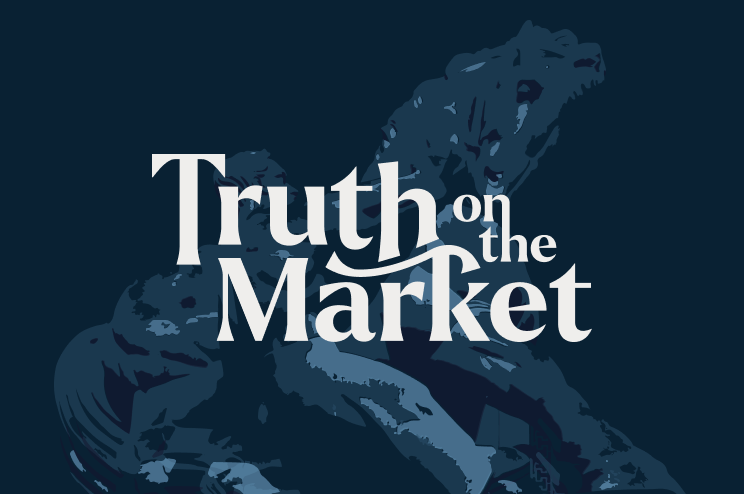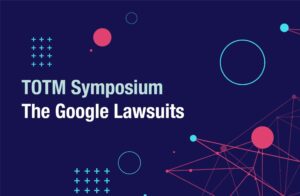Showing results for: “100% Pass 2024 UiPath Marvelous UiPath-ADPv1 Latest Exam Forum 💿 Search for ➥ UiPath-ADPv1 🡄 and download it for free on ➽ www.pdfvce.com 🢪 website 🏬New UiPath-ADPv1 Test Dumps”
Section 2 Symposium: Dan Crane on Buyer-Instigated Bundled Discounts
Bundled discounts have been one of the hottest monopolization topics of the last decade. Much of the trouble began with the Third Circuit’s en banc decision in LePage’s v. 3M, which reversed an earlier 2-1 panel decision which in turn had overturned a plaintiff’s jury verdict largely based on 3M’s bundled discounts. After the Solicitor ... Section 2 Symposium: Dan Crane on Buyer-Instigated Bundled Discounts
Section 2 Symposium: Thom Lambert on The DOJ-FTC Divide on Bundled Discounts
A bundled discount occurs when a seller offers to sell a collection of different goods for a lower price than the aggregate price for which it would sell the constituent products individually. Such discounts pose different competitive risks than single-product discounts because, as I explained in this post, they may have an exclusionary effect even ... Section 2 Symposium: Thom Lambert on The DOJ-FTC Divide on Bundled Discounts
Section 2 Symposium: Herbert Hovenkamp on Predatory Pricing and Bundled Discounts
The baseline for testing predatory pricing in the Section 2 Report is average avoidable cost (AAC), together with recoupment as a structural test (Report, p. 65). The AAC test or reasonably close variations, such as average variable cost or short-run marginal cost, seems about right. However, differences among them can become very technical and fine. ... Section 2 Symposium: Herbert Hovenkamp on Predatory Pricing and Bundled Discounts
Section 2 Symposium: Bruce Kobayashi on Predatory Pricing and the Relevant Measure of Cost
Dimming the Court’s Brooke Group Bright Line Administrable Rule? As noted in my earlier post, the Supreme Court’s Brooke Group rule is held out as the primary example of an administrable bright line rule aimed at controlling the costs of type I error. In practice, the Brooke Group above cost rule is not as bright ... Section 2 Symposium: Bruce Kobayashi on Predatory Pricing and the Relevant Measure of Cost
Section 2 Symposium: Bruce Kobayashi on Are Administrable Bright Line Rules Underutilized in Section 2 Analyses?
One of the most important changes in the antitrust laws over the past 40 years has been the diminished reliance of rules of per se illegality in favor of a rule of reason analysis. With the Court’s recent rulings in Leegin (eliminating per se rule for minimum RPM) and Independent Ink (eliminating the per se ... Section 2 Symposium: Bruce Kobayashi on Are Administrable Bright Line Rules Underutilized in Section 2 Analyses?
Section 2 Symposium: Bill Page on Microsoft and the DOJ’s General Standards of Exclusion
The DOJ’s § 2 Report offers two recommendations under the heading of “General Standards for Exclusionary Conduct.” First, for evaluating alleged acts of exclusion, the Report endorses the burden-shifting framework of the D.C. Circuit’s 2001 Microsoft decision. Second, after canvassing various standards of anticompetitive effect, the Report settles on the “disproportionality test,” under which “conduct ... Section 2 Symposium: Bill Page on Microsoft and the DOJ’s General Standards of Exclusion
Section 2 Symposium: Michael Salinger on Error Costs and the Case for Conduct-Specific Standards
The source of much of the disagreement between the Antitrust Division and the FTC is based on chapter 3, which discusses general standards for Section 2 liability. A major portion of chapter 3 concerns whether there is a unifying principle underlying appropriate doctrine for all behavior challenged under Section 2. A substantial portion of the ... Section 2 Symposium: Michael Salinger on Error Costs and the Case for Conduct-Specific Standards
Section 2 Symposium: Bill Kolasky on a Stepwise Rule of Reason for Exclusionary Conduct
The most controversial part of the Justice Department’s Single Firm Conduct Report is the Department’s proposed use of what it terms a “substantial disproportionality” test for exclusionary conduct. Under this test, the Justice Department would bring a case only if the harm to consumers and competition caused by a dominant or near-dominant firm’s conduct is ... Section 2 Symposium: Bill Kolasky on a Stepwise Rule of Reason for Exclusionary Conduct
Section 2 Symposium: Thom Lambert on Defining and Identifying Exclusionary Conduct
There’s a fundamental problem with Section 2 of the Sherman Act: nobody really knows what it means. More specifically, we don’t have a very precise definition for “exclusionary conduct,” the second element of a Section 2 claim. The classic definition from the Supreme Court’s Grinnell decision — “the willful acquisition or maintenance of [monopoly] power ... Section 2 Symposium: Thom Lambert on Defining and Identifying Exclusionary Conduct
Section 2 Symposium
We’re very pleased to be able to kick off Truth on the Market’s symposium on Section 2 and the Section 2 Report. We’ve put together a lineup that includes current and former agency representatives, economists, practicing lawyers, and academics in the hopes of creating an environment conductive to a productive discussion of not only the ... Section 2 Symposium
Section 2 Symposium: Howard Marvel–An Economist’s View
In the wake of Bork and Posner, and Baxter and the Reagan Revolution, a consensus emerged that big could be bad, but the harm that dominant firms could do needed to be demonstrated, not simply assumed in consequence of their sheer size. Moreover, the demonstration required harm to competition. The consensus held through the Clinton ... Section 2 Symposium: Howard Marvel–An Economist’s View
Section 2 Symposium: Keith Hylton–An Economist’s View
The “error cost” or “decision theory” approach to Section 2 legal standards emphasizes the probabilities and costs of errors in monopolization decisions. Two types of error, and two associated types of cost are examined. One type of error is that of a false acquittal, or false negative. The other type of error is that of ... Section 2 Symposium: Keith Hylton–An Economist’s View





